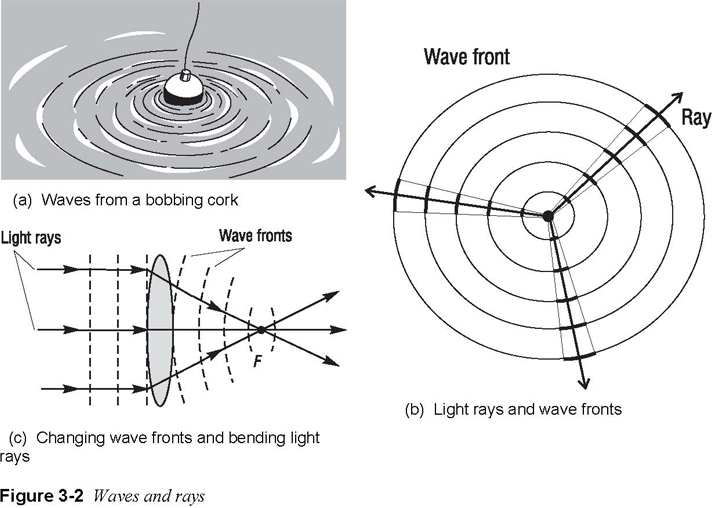 a
a
In Figure 3-2b, circular wave fronts are shown with radial lines drawn perpendicular to them along several directions. Each of the rays describes the motion of a restricted part of the wave front along a particular direction. Geometrically then, a ray is a line perpendicular to a series of successive wave fronts specifying the direction of energy flow in the wave.
Figure 3-2c shows plane wave fronts of light bent by a lens into circular (spherical in three dimensions) wave fronts that then converge onto a focal point F. The same diagram shows the light rays corresponding to these wave fronts, bent by the lens to pass through the same focal point F. Figure 3-2c shows clearly the connection between actual waves and the rays used to represent them. In the study of geometrical optics, we find it acceptable to represent the interaction of light waves with plane and spherical surfaces—with mirrors and lenses—in terms of light rays.
With the useful geometric construct of a light ray we can illustrate propagation, reflection, and refraction of light in clear, uncomplicated drawings. For example, in Figure 3-3a, the propagation of light from a “point source” is represented by equally spaced light rays emanating from the source. Each ray indicates the geometrical path along which the light moves as it leaves the source. Figure 3-3b shows the reflection of several light rays at a curved mirror surface, and Figure 3-3c shows the refraction of a single light ray passing through a prism.
Page: 12345678910111213141516171819202122232425262728293031323334353637383940
| Eyes carePhysicianBate's booksTechnologyForumLaser corre.Blues under eyesburning in the eyesanother diseasesMedical mistery Naturally eyesight correction. No laser eye surgery. Restore eyesight. Vision correction. |




